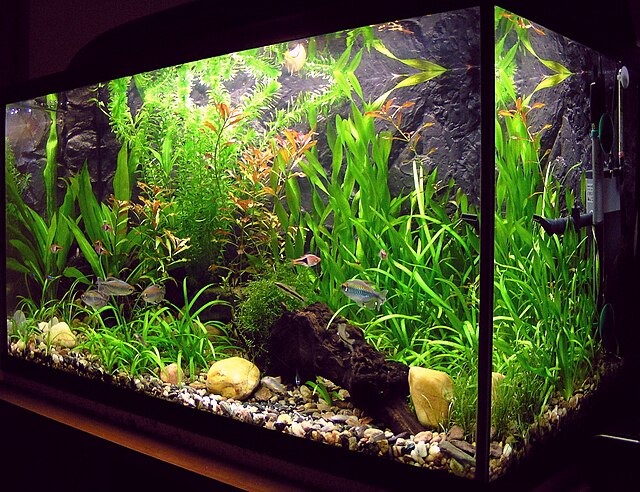Keep in mind that the aquarium is indeed a habitat. All components should work together to support the unit in a healthy manner. The water should be of the proper pH and temperature to maintain both plants and fish. If the aquarium is a marine tank, the water should also maintain the proper salinity. The fish should not foul the tank beyond the filtration system’s ability to clean the water, nor should they eat or uproot the plants beyond those plants’ ability to recover. The plants should be able to remove nitrogen from the system and replenish oxygen without fouling the tank with decaying plant matter from dying back and without crowding the tank with excessive growth. If any of these components break down, the system fails.

If the system fails, then the owner can be left with an empty tank before he or she knows it. There are several advantages to having live plants in an aquarium. Plants can assist with stabilizing the alkalinity or the acidity of the aquarium water. They exchange oxygen for nitrogen and may reduce the need for filtration. They provide a living environment for fish to shelter themselves in, creating surroundings more like those found in nature. The proper plants can also supplement the diets of herbivorous fish, if they are healthy and of the correct species for the fish to consume. Hobbyists who are interested in breeding their fish will find that live plants provide better cover for the baby fish to hide in than plastic plants might offer.
Some disadvantages do exist with live plants, however. Plants need about 10 hours of light per day to survive in the aquarium environment. In addition, many, if not most, aquarium hoods provide insufficient light to support plants in the environment. Those that do provide sufficient light, typically provide only enough to support a limited number of species. Some plants have large root systems. Uprooting them after they die might cause extensive disruption to the aquarium decorations or to the other plants. Fast-growing plants may require fertilization to remain alive, which may cause some issues with maintaining proper pH levels in the aquarium. To successfully match the fish with plants, it is important to understand what kind of wild environment they normally inhabit. Do your homework. All the fish species that are chosen for any single tank should require the same conditions, to minimize the risk of death and disease. Also be certain that the plants chosen for an aquarium are suited to living underwater. Some good plants for a freshwater aquarium are ava moss (Taxiphyllum barbieri), Amazon sword (Echinodorus bleheri), Marimo moss ball (Aegagropila linnaei), and Brazilian pennywort (Hydrocotyle leucocephala).
Related Articles & Free Email Newsletter Sign Up
6 Ways to Fix an Unhealthy Aquarium
How to Identify and Solve Aquarium Problems
How to Keep a Healthy Aquarium Through Preventive Maintenance

Comment here